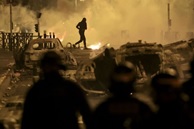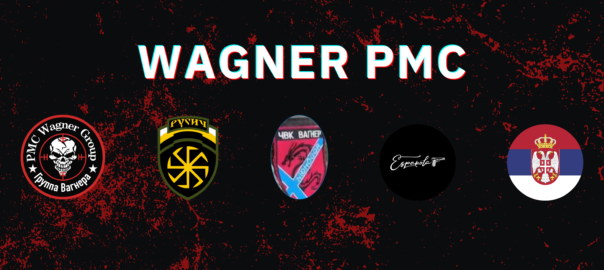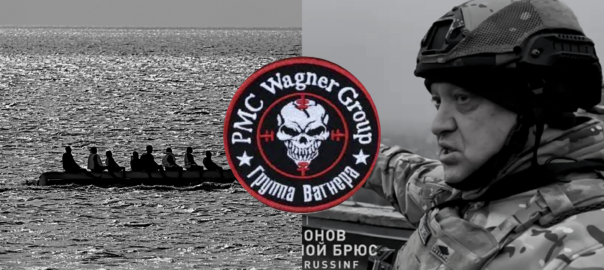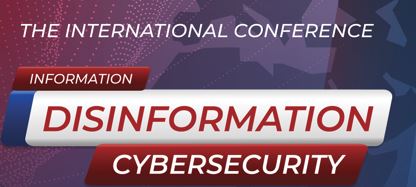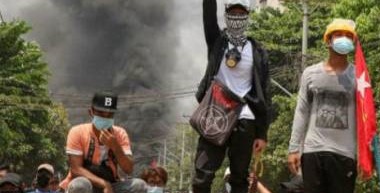Le rivolte occorse in Francia alla fine di giugno mostrano e confermano che a livello globale, certamente europeo, le società stanno diventando sempre più radicali e violente.
Continue readingPMC Wagner and Allied Mercenaries, Aftermath of the March by – Federico Borgonovo & Giulia Porrino
During the Russian-Ukrainian conflict, PMC Wagner exploited online and offline support of some military groups, including:
- Española, a parallel battalion of Russian ultras led by Alexander Shum and with a special training centre near San Petersburg.
- Rusich, a reconnaissance, sabotage and assault group, directly attached to the PMC Wagner.
- Serb members, active since the deployment in Syria. Those are linked with several ultras’ communities.
- Níðhöggr (Nidhogg), a little unit near to the Scandinavian right-wing militia funded by an actual Wagner member.
All these units were orbiting around the PMC Wagner as embedded support groups. Starting from their online propaganda we theorized a pro-Wagner alliance system (figure 1).
Continue readingCounteR Project Newsletter’s Issue #6
CounteR Project Newsletter’s Issue #6 is now released and its full text is available here.
The spring edition marks CounteR’s successful entering into the third year of project implementation and provides insights from the fourth consortium meeting, held in Toulouse – France. In Issue #6, we continue presenting the scientific publications, authored by consortium members. Notably, ICON’s CEO Ian Castillo gives a special interview, in which he talks about CounteR’s scientific and technological advantages that contribute to making Europe a safer place.
Follow CounteR on Twitter and on LinkedIn to make sure that you stay up-to-date with exciting project updates.
The previous issues of the CounteR newsletter can be found here: Issue #5, Issue #4, Issue #3, Issue #2, and Issue #1.
Thе CounteR Project has received funding from the European Union’s Horizon 2020 research and innovation programme under grant agreement No. 101021607.
Gli arresti di nove Latin Kings a Milano: i preoccupanti legami con i leader in Ecuador e la mafia albanese – by Giovanni Giacalone
Il 19 aprile 2023 un’operazione della Polizia di Stato, coordinata dalla Procura di Milano, ha portato all’arresto di nove appartenenti alla pandilla sudamericana “Latin Kings”, fazione “Chicago”, tutti tra i 20 e i 36 anni e accusati di associazione a delinquere, tentato omicidio, lesioni personali, rissa, danneggiamento, furto aggravato e lancio pericoloso di oggetti. Continue reading
CounteR Project Newsletter’s Issue #5
CounteR Project Newsletter’s Issue #5 is now released and its full text is available here.
The editorial team looks forward to readers’ feedback through CounteR’s LinkedIn Cluster Group. Join the group now, share your thoughts, and stay tuned to upcoming webinars and thematic discussions on online radicalisation prevention! Continue reading
Tatarsky: implosione della rete? – by Giulia Porrino
Maxim Fomin, noto come Vladlen Tatarsky, influencer e membro del PMC Wagner è stato ucciso alle 18.30 ora locale a San Pietroburgo. In precedenza era stata evidenziata la centralità del canale di Tatarsky nella rete di reclutamento Wagner e come una sua eleminazione avrebbe probabilmente portato a una crisi all’intera rete.
Continue readingTerrorist plot in Greece reported to be thwarted: first comments on operational questions – by Maria Chr. Alvanou
Greek law enforcement authorities have announced that they have dismantled a terror network planning to conduct attacks in Greece[1]. According to media reporting on the subject, 2 men of Pakistani origin have been arrested as part of a terror network whose head is also Pakistani organizing the criminal activities from Iran. Continue reading
Correlation Is Not Causation: Wagner e migranti come attori della guerra cognitiva – by Giulia Porrino
Nella giornata di lunedì il Ministro della Difesa Guido Crosetto e il Ministro degli Affari Esteri Antonio Tajani hanno denunciato la presenza della PMC Wagner dietro l’aumento degli sbarchi sulle coste italiane, triplicati rispetto allo stesso periodo nel 2022. Secondo i Ministri si tratta di una strategia di guerra cognitiva che i mercenari russi stanno attuando per destabilizzare l’Europa. Non si è fatta attendere la risposta di Prigozhin (su Telegram), che ha negato di essere al corrente di quanto sta accadendo.
Continue readingGuerra cibernetica e guerra russo-ucraina: la disinformazione. Conferenza on line il 16 marzo 2023 – 10:00
Guerra cibernetica e guerra russo-ucraina: la disinformazione.
Conferenza on line il 16 marzo 2023 ore 10:00 con la partecipazione del Generale Alexander Potity del SSSCIP-State Service of Special Communications and Information Protection of Ukraine e Head of the Department of Security of Information Systems and Technologies. Place: MS Teams platform: https://tiny.pl/wkbg5 Continue reading
Le forze della guerriglia anti regime in Myanmar (parte 2) – by Andrea Castronovo
Intelligence e individuazione dei target militari – Analizzando l’operato di un gruppo di guerriglia urbana a Yangon è emerso come una delle strategie per la raccolta di informazioni, con l’obiettivo di identificare i target delle operazioni, si basi sul network di conoscenze intracomunitarie dei membri della resistenza nei diversi quartieri. Solitamente, i gruppi di una specifica zona della città sono in grado di individuare sia le persone che lavorano per la giunta sia le persone collegate al partito politico nazionale affiliato ai militari, l’Union Solidarity and Development Party (USDP). Continue reading
Le forze della guerriglia anti regime in Myanmar (parte 1) – by Andrea Castronovo
Contesto. In seguito al colpo di stato militare del febbraio 2021, il regime attuò una sistematica campagna di repressione delle manifestazioni pacifiche insorte in tutto il Myanmar. La brutalità dell’esercito spinse centinaia di migliaia di giovani a trasferirsi nei territori di frontiera, controllati dalle organizzazioni politico-armate delle minoranze etniche, per intraprendere degli addestramenti militari di base. Continue reading
La minaccia jihadista lungo la via del cotone – by Luca Cinciripini
La recente visita del Presidente del Consiglio Giorgia Meloni in India segnala non solo il tentativo di scongelare i rapporti diplomatici con Nuova Delhi, ma anche il riconoscimento implicito del ruolo che l’Asia riveste in termini di importanza geopolitica e di scenari futuri.[1] Da lungo tempo ormai, l’Indo-Pacifico e il Mediterraneo allargato stanno sviluppando un collegamento strategico in grado di offrire sia opportunità economiche che di sicurezza, snodandosi a partire dagli attori sul Mare Nostrum (Italia, Egitto, Israele) e coinvolgendo alcuni degli scacchieri geopolitici di maggior rilievo.[2] Continue reading

